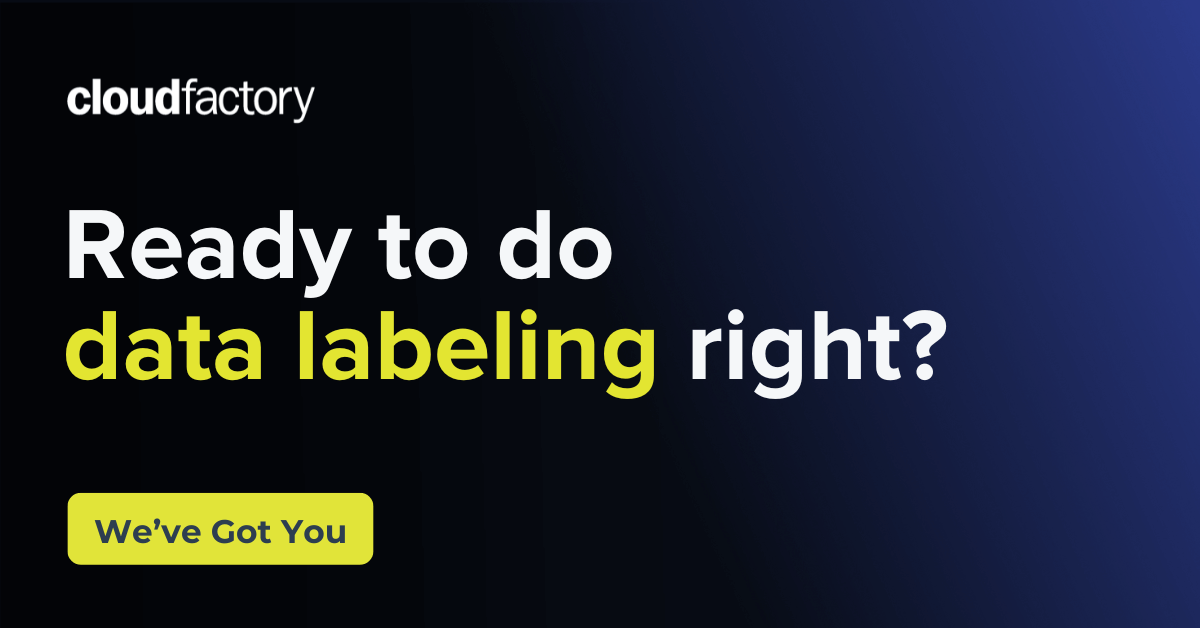Fed up with trying to find ways to accelerate innovation and deliver exceptional customer experiences?
Wouldn't it be great if you could streamline the data labeling process, ensure better annotation quality, and bring your products to market faster?
One secret to getting that done is partnering with a data labeling provider that utilizes vision transformer (ViT) models as part of their data annotation automation approach.
These cutting-edge models excel at generating precise and consistent labels, particularly for intricate or ambiguous images.
What are vision transformer models?
Imagine you have a giant puzzle made up of many small pieces. To solve the puzzle, you must understand how each piece fits together and how they relate to the overall picture.
ViTs are like puzzle solvers for computer vision. They can look at an image, break it down into smaller parts, and figure out how those parts fit together to make the whole image.
ViTs are a specific type of deep learning model for Vision AI tasks. Its architecture is based on the “transformers” concept originally designed for complex natural language processing (NLP) problems.
This technology is particularly useful in scaling up data annotation tasks for large datasets while maintaining high levels of accuracy.
As of today, ViTs can be applied to various computer vision tasks such as image classification, object detection, image segmentation, and action recognition.
If you want to build a ViT model, here's a step-by-step breakdown of what you need to do:
-
Splitting the input image
The initial step is to take an input image and divide it into several patches. These patches are non-overlapping and are created in a fixed number. -
Linear embedding
Each patch goes through a transformation called linear embedding. This process converts each patch into a one-dimensional set of tokens. -
Model architecture
The model consists of two main parts–the encoder and the decoder.
- Encoder: The encoder analyzes the patches and extracts important features from the image. It captures both local and global contextual information.
- Decoder: The decoder takes the information gathered by the encoder and processes it. Depending on the specific task, it formulates the final output, which could be a bounding box, a segmentation map, or a class label.
-
Iterative process
These steps are repeated iteratively until the desired performance of the model is achieved.
-Transformers-for-Image-Recognition-at-Scale.jpg?width=2130&name=Vision-Transformer-(ViT)-Transformers-for-Image-Recognition-at-Scale.jpg)
Source: "An Image is Worth 16×16 Words: Transformers for Image Recognition at Scale"
What are the benefits of incorporating vision transformers for computer vision projects?
ViTs can capture both the local and global context of an image
The transformer-like architecture allows ViTs to capture both the local and global context of an image, giving them the edge in learning complex patterns and relationships in an image compared to traditional convolutional neural networks (CNN).
For example, if you have an image taxonomy that includes an attribute of "day/night" that specifies when the image was taken, you would need a lot of context to label the image correctly. This is where ViTs can help. ViTs can learn the different lighting patterns and shadows present in day and night images and use this information to correctly label the image.
ViTs can look at every pixel in an image and understand how it relates to all the other pixels. This gives them a better understanding of the overall structure of the image, which can be helpful for tasks like object detection and image segmentation.
ViTs give you image recognition at scale
When building your ML solution foundation, you must prepare for scale. As your model scales, the number of image patches and architecture layers can be easily adjusted, making ViTs a highly scalable approach. However, like any transformer, ViTs need significant training data to achieve high performance, measured with one of the vision AI metrics like mean Average Precision.
CloudFactory's approach to ViTs for computer vision projects
CloudFactory uses ViT models to support AI-assisted labeling for object detection, semantic segmentation, and instance segmentation for computer vision tasks.
We’ve integrated the best parts of ViTs into Accelerated Annotation, our best-in-class data labeling and workflow solution. By embracing ViTs, Accelerated Annotation empowers businesses to harness the power of AI-assisted labeling to streamline their computer vision workflows and achieve unprecedented levels of accuracy and efficiency.
We start with a broader and more general approach of fine-tuned foundational models and carefully adjust to your use case, bringing a fully custom model based on the ViTs architecture that 100% fits your use case.
If you're building your data annotation strategy and need greater detail about Vision AI decision points, download our comprehensive white paper, Accelerating Data Labeling: A Comprehensive Review of Automated Techniques.



